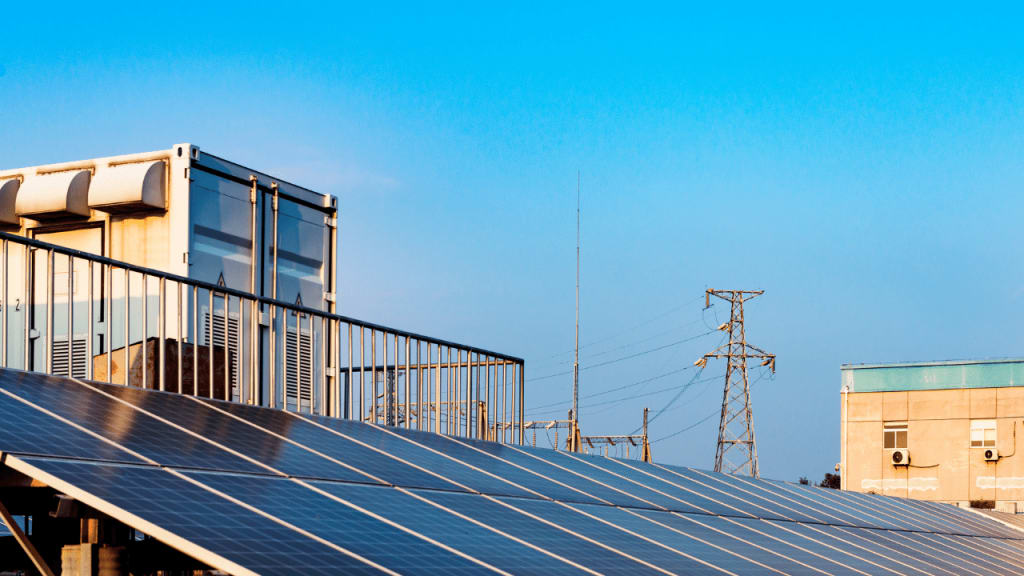
As the world progresses, more and more people are looking for ways to conserve energy and save money. Solar power comes from photovoltaic cells, which convert sunlight into electricity. It's one of the most popular alternative energy sources available today because it provides several benefits over traditional fossil fuel-based energy generation. To better understand how solar power works, it is essential to understand the basics of photovoltaic cells and solar power systems.
What are Photovoltaic Cells?
Photovoltaic cells are the building blocks of solar panels. They convert sunlight into electrical energy. Understanding how they work to make the most of solar energy is essential. It comprises two parts, the negative-charged base, and the positive-charged top. When sunlight hits the cell, it causes electrons to be knocked loose from the atoms in the silicon. The negatively charged electrons are drawn to the positively charged side of the cell, creating an electrical current. This current, once converted, may be utilized to power your house or company.
How do Photovoltaic Cells Work?
Photovoltaic cells are made of semiconductor materials, such as silicon. When sunlight hits the cell, it causes the release of electrons. Metal conductors on the sides of the cell capture these electrons and create an electric current. This current can then be harnessed to electrical power devices. If you live in a sunny area, you've seen these cells in action- they're often used to power calculators and other small electronic devices. Photovoltaic systems use an extensive array of solar cells to generate enough power for household or agricultural purposes.
What Are The Different Forms of Photovoltaic Cells Available?
We can classify photovoltaic cells into two broad categories: monocrystalline and polycrystalline.
The monocrystalline cell is formed of a single, enormous crystal of silicon. They are cut from a cylindrical ingot of silicon and then polished to create a smooth surface. The advantage of monocrystalline cells is that they are very efficient in converting sunlight into electrical energy.
The polycrystalline cell is made of multiple tiny crystals of silicon. They are cast in a square mold and then cut into small wafers. However, they are cheaper to manufacture.
How do you Choose the Right Type of Photovoltaic Cell for your Needs?
The following are some factors to consider when choosing the right type of photovoltaic cell for your needs:
- Efficiency: More efficient cells will produce more electricity, but they also tend to be more expensive. If your goal is to generate a large amount of electricity, you will want to select a more efficient cell.
- Cost: Less efficient cells are less expensive but will also produce less electricity. When choosing a cell, it is crucial to balance efficiency and cost.
- Size: The size of the cell will determine how much electricity it can produce. More giant cells can generate more electricity than smaller cells. Whichever you choose, make sure that the cell is the right size for your needs.
- Type of Solar Panel: The type of solar panel you choose will also affect the efficiency of the cell. Though monocrystalline cells are more expensive, they are also significantly more efficient.
- Climate: The cell's current location can also affect its performance. That means you'll need to choose a cell designed for use in your particular weather.
- Application: The type of application the cell will be used for (e.g., residential, commercial, industrial) can also affect its performance. Different applications have different requirements, so make sure to choose a cell that is designed for the application you have in mind.
Conclusion
We are a company based in the Virginia Beach area specializing in solar panel installation. We offer residential, commercial, agriculture, and RV solar services. We understand that not everyone is familiar with solar energy, so we have written this article to provide a basic understanding of photovoltaic cells and solar power systems. So if you are considering installing solar panels, we hope this article has helped provide you with some basic knowledge about the technology behind it.






Comments
There are no comments for this story
Be the first to respond and start the conversation.